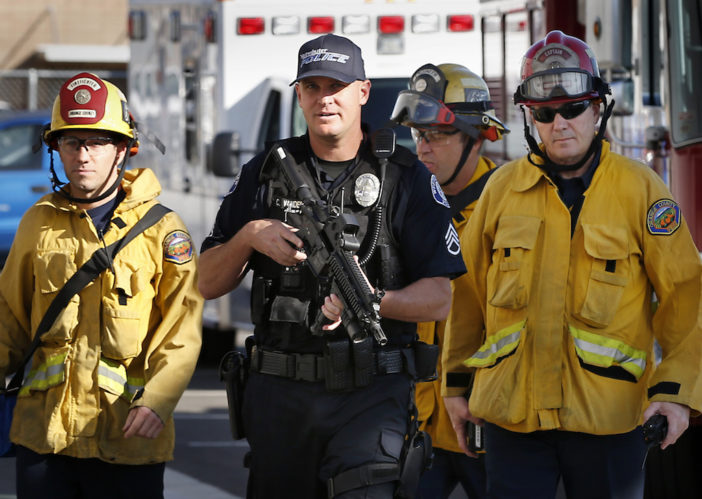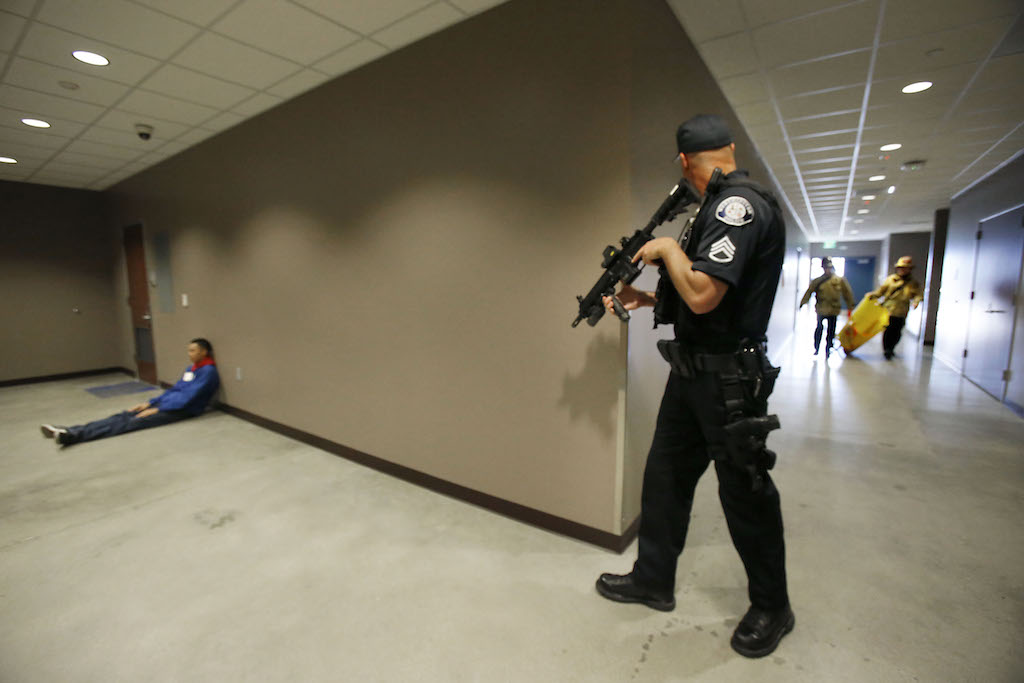“We’ve arrived at an active shooter incident. We’re going to need more resources.”
With his foot propping open the metal door of the building, Orange County Fire Authority Capt. Doug Dodge put the call out over the radio.
Two Westminster PD sergeants, with their AR-15s drawn, led Dodge and other firefighters into the buildings to rescue six injured victims.
Firefighters dragged the injured on bright yellow sleds made of of heavy-duty plastic and loaded them into waiting ambulances.
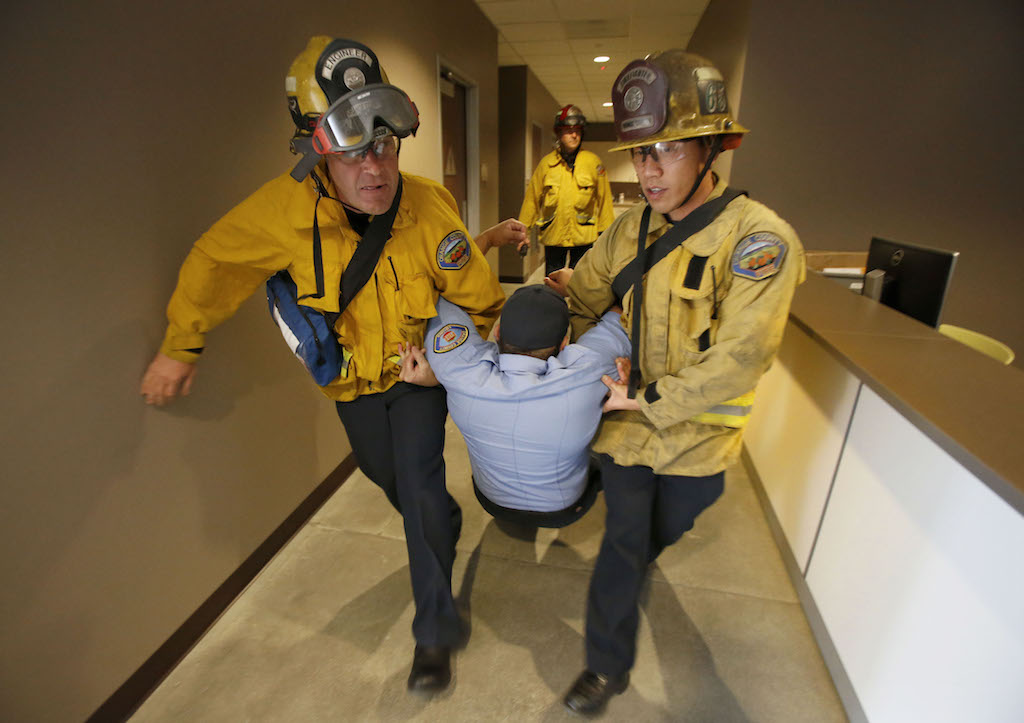
OC Fire Authority members aid a “victim” during an active shooter drill in conjunction with the Westminster Police Department.
Photo by Christine Cotter
The WPD sergeants continued to check each room to ensure there was no threat before sending the firefighters to render medical aid.
In less than five minutes, the OCFA and Westminster PD cleared the building.
This was different than any other emergency drill the two agencies had run before because, for the first time, police and fire were in direct communication with each other.
The Westminster Police Department has outfitted five OCFA engines and a battalion chief that serve the city with police radios so they can better coordinate emergency response.
The way it stands now, the OCFA can’t have radio communication with the Westminster PD or police agencies in any of the cities and unincorporated areas it serves because they operate on different systems.
To coordinate in an emergency, an officer would have to call police dispatch, that dispatcher then would call the OCFA dispatch center, then the fire dispatcher would relay the message to the waiting fire engine.
Westminster PD Sgt. Cord Vandergrift said that is two steps too many in situations where seconds matter.
“It doesn’t make a whole lot of sense,” Vandergrift said. “If we’re having an emergency, we need to be able to talk to the firefighters who are bringing in medical care.”

Westminster Police Department Sgt. Cord Vandergrift and OC Fire Authority Battalion Chief, Robert Acosta (center), and Capt. Doug Dodge, discuss strategy after an active shooter drill. Photo by Christine Cotter/Behind the Badge OC
After the San Bernardino shooting on Dec. 2, which killed 14 people and left 22 injured, Vandergrift said the importance of direct communication for first responders became even more apparent.
He approached his superiors at the Westminster PD and asked to use radios from the department’s surplus supply to give to the firefighters.
Vandergrift coordinated a training Feb. 11 at the Westminster Police Department Range and Safety Training Center to test how police and fire would work together on the same radio frequency.
“The key is they can listen directly to what is going on in each situation and gather intel that way,” he said. “There is no time delay. They are getting real-time information that can help rescue people.”
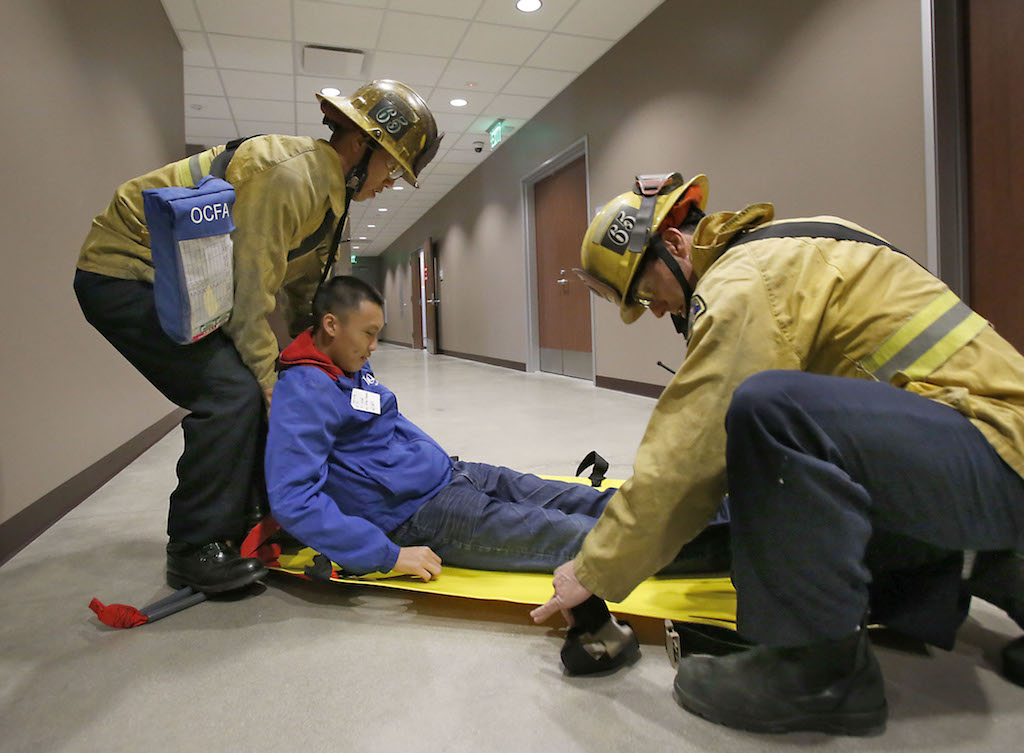
Jonathan Vo-Chung is placed on a stretcher by OCFA members during an active shooter drill.
Photo by Christine Cotter/Behind the Badge OC
This drill covered an active shooter incident, but the radios could be critical in various types of emergencies from a major natural disaster, such as an earthquake, to an active hostage situation or major traffic incident.
“It met our objective,” OCFA Battalion Chief Robert Acosta said after the training. “We wanted to check the viability of the radios, which were great, and work on tasks as opposed to strategy.”
About four years ago, the OCFA partnered with the Westminster PD to stage an emergency drill at the Westminster Mall.
Hundreds of volunteers played injured citizens and dozens of firefighters and police officers participated in the massive exercise that focused on how police and fire would manage and coordinate resources if a major event strikes.
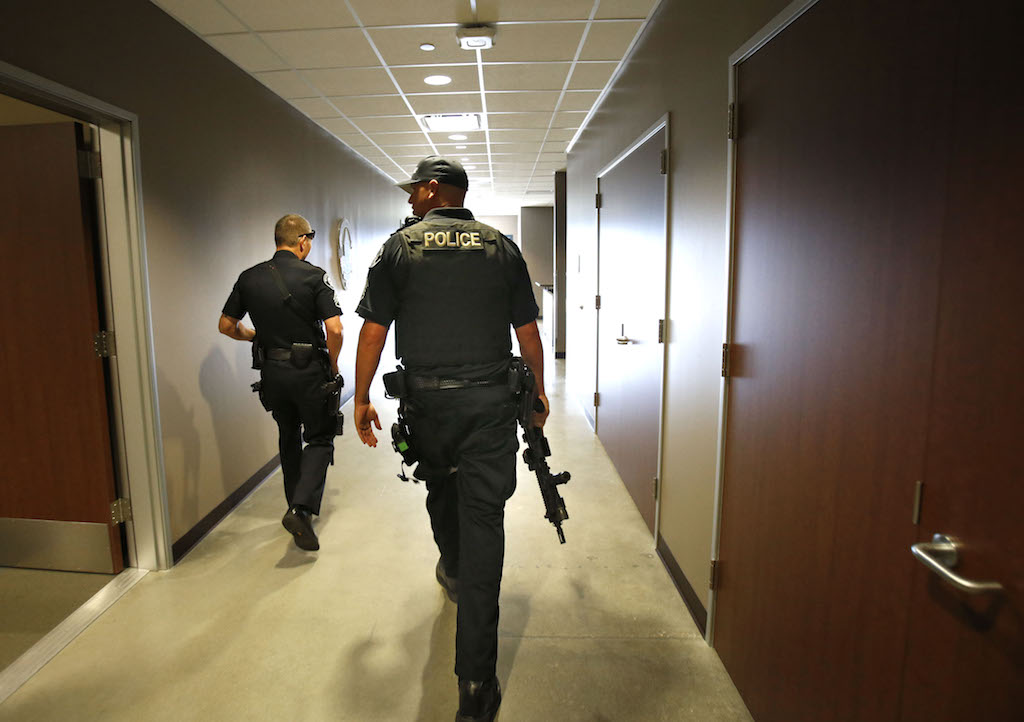
Westminster Police Department Sgt. Cord Vandergrift, right, and Sgt. Mark Lauderback are on the lookout during an active shooter drill in conjunction with the OC Fire Authority.
Photo by Christine Cotter/Behind the Badge OC
During the Feb. 11 drill, the focus was on how officers and firefighters would communicate efficiently to rescue victims, evaluate their condition and get them the care they needed.
“This was a much smaller scale that allowed us to fine tune tactics and rescue tasks,” Acosta said.
Using police radios in fire engines is currently in the testing phase, but OCFA plans on training the crews of the four other engines that serve Westminster.
If all goes well, the idea could eventually expand agency-wide, Dodge said.
“We’re trying to save some time and maybe that time savings can save some lives,” he said.
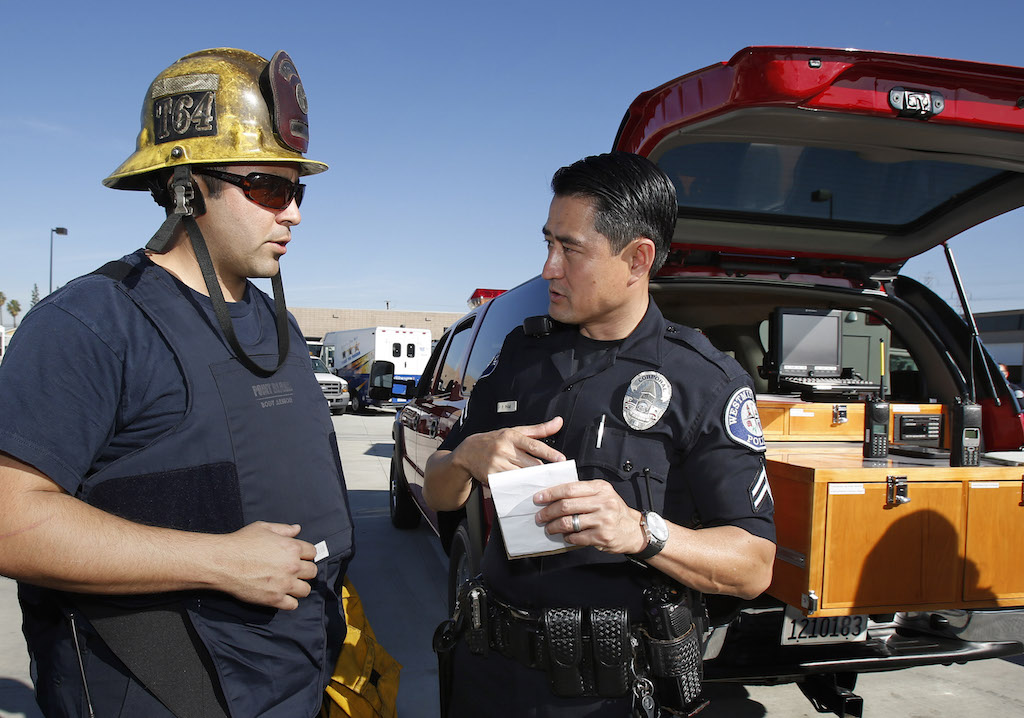
Westminster Police Department’s Cpl. Phuong Pham, and OCFA’s Tony Olvera discuss tactics after an active shooter drill.
Photo by Christine Cotter/Behind the Badge OC
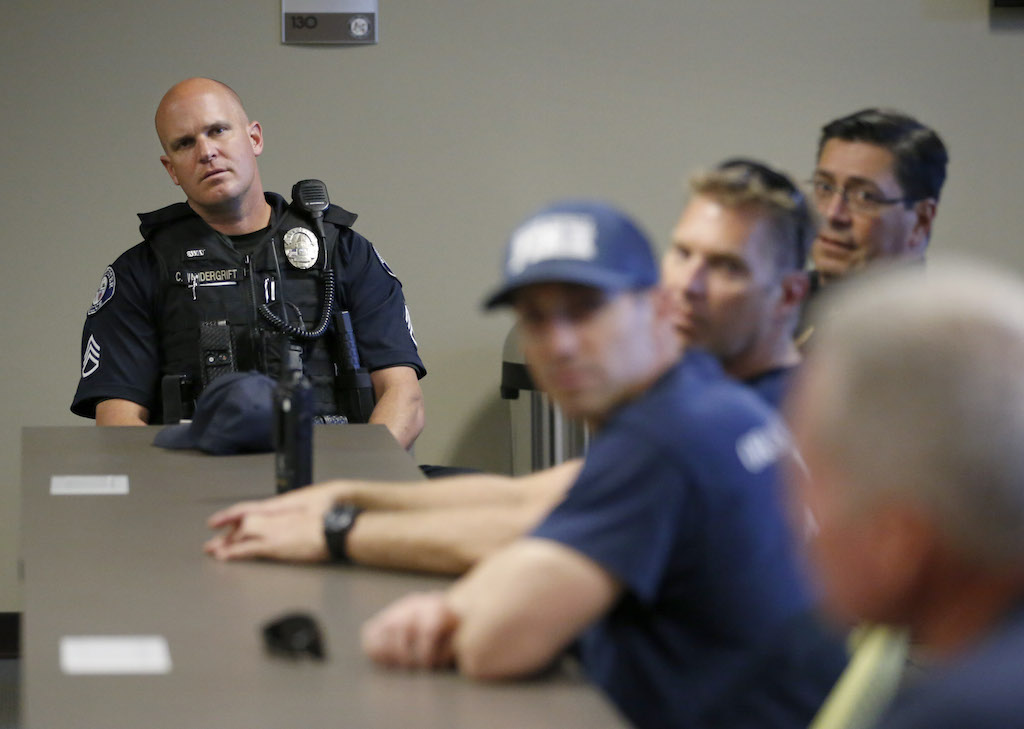
Westminster Police Department Sgt. Cord Vandergrift supplied the Orange County Fire Authority engines that serve Westminster with police radios so police and fire can interact in an emergency.
Photo by Christine Cotter/Behind the Badge OC
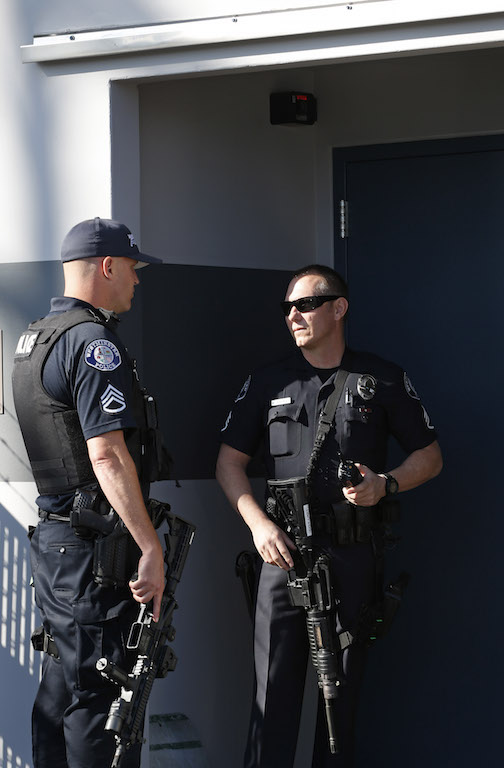
Westminster Police Department Sgt. Cord Vandergrift, left, and Sgt. Mark Lauderback prepare for an active shooter drill in conjunction with the OC Fire Authority.
Photo by Christine Cotter/Behind the Badge OC
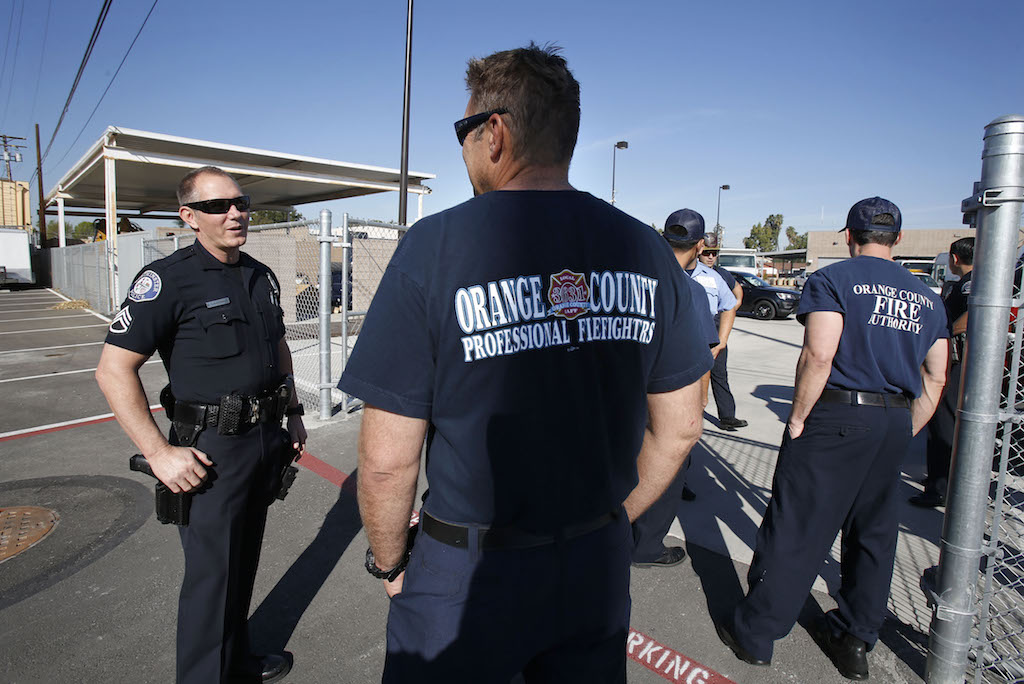
Westminster Police Department Sgt. Mark Lauderback, left, works with the OC Fire Authority in preparation during an active shooter drill.
Photo by Christine Cotter
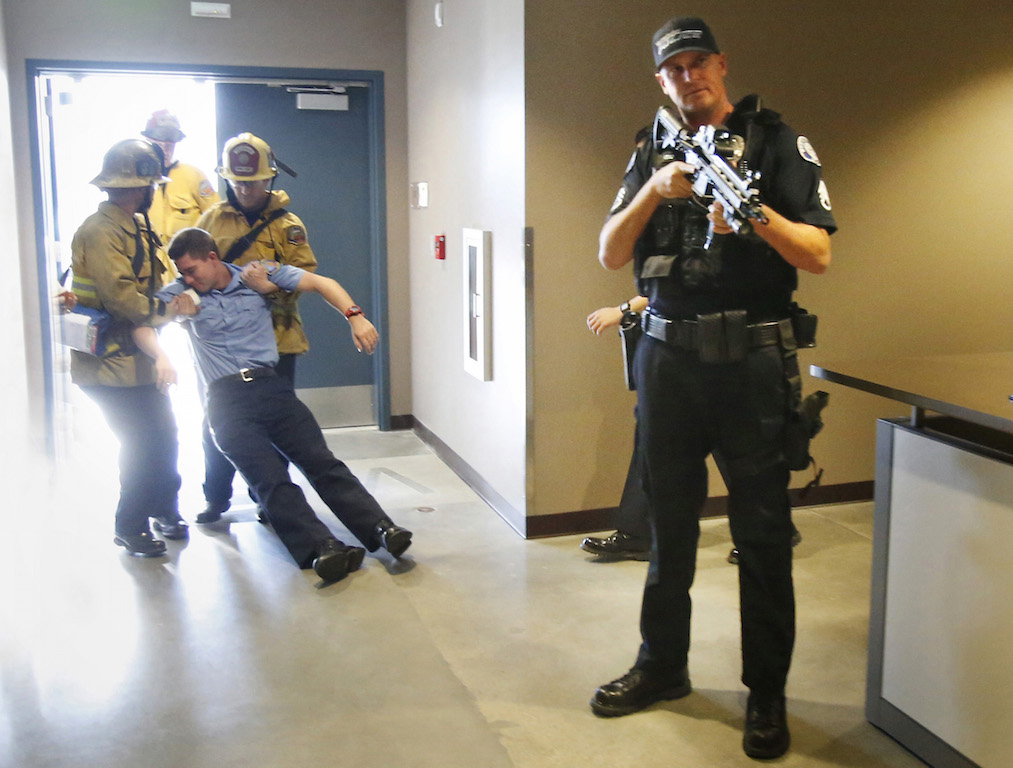
Westminster Police Department Sgt. Cord Vandergrift , right, keeps watch as firefighters rescue a wounded man during an active shooter drill.
Photo by Christine Cotter/Behind the Badge OC
 Behind the Badge
Behind the Badge
